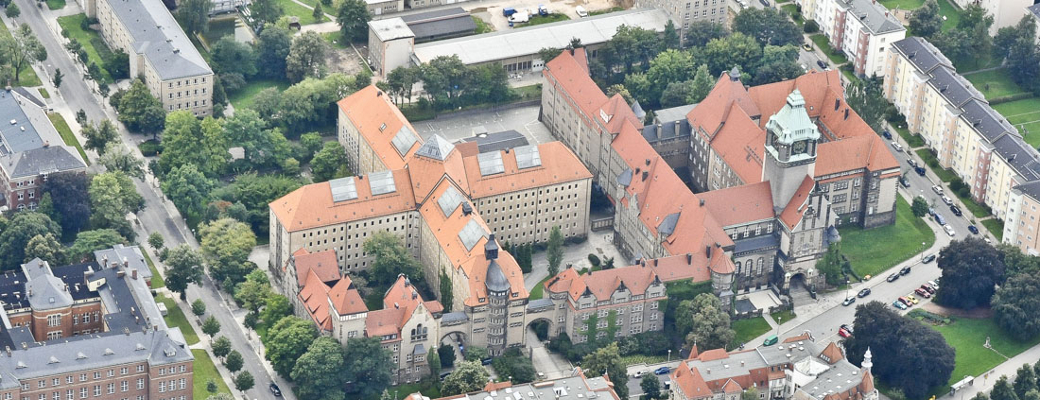Advanced Econometrics
Bayesian Time Series Analysis
Lecturer: Professor Christiane Baumeister, PhD (University of Notre Dame, CEPR)
Date: September 3-7, 2018
Venue: Halle Institute for Economic Research (IWH) – Member of the Leibniz Association, Kleine Maerkerstrasse 8, 06108 Halle (Saale), Germany, conference room (ground floor)
Registration: until August 1, 2018 via email: annett.hartung@iwh-halle.de. The course is designed for at most 25 participants.
Announcement: pdf
Course Description
Structural vector autoregressions are the workhorse models in empirical macroeconomics. The Bayesian approach to estimation and inference of (S)VAR models has gained popularity as models have become more complex. The goal of this course is to equip students with the tools they need for state-of-the-art empirical research and to develop practical skills to apply Bayesian methods to specific problems. The first part of the course covers the basics of Bayesian econometrics including standard choices of prior distributions and numerical simulation methods. The second part of the course challenges the current practice of identification of VAR models by introducing a more general Bayesian framework that encompasses standard identification approaches as special cases. Drawing structural inference from VAR models requires making use of prior information. This course provides formal tools of Bayesian analysis that allow to incorporate prior beliefs about both the structural coefficients and the impacts of shocks in a flexible way and to characterize the contribution of prior information. The third part of the course extends the standard VAR model by allowing macroeconomic dynamics to evolve over time. Time-varying coefficients capture smooth changes in the underlying structure of the economy, while stochastic volatility allows for time variation in the variances of the error processes that affect the VAR. This course focuses on the specification and estimation of TVP-VARs in a Bayesian framework. The methods introduced in the lectures will be illustrated with various applications in Matlab.
Course Outline
Monday, September 3, 2018
10:30–17:00
Tuesday, September 4, 2018
09:45–17:00
Wednesday, September 5, 2018
09:45–17:00
Thursday, September 6, 2018
09:45–17:00
Friday, September 7, 2018
09:00–15:30
Grading
Each student is asked to write a proposal for a research paper using one of the methods discussed in the course. The deadline for submission is October 30, 2018.
Reading List
Reference textbooks:
Greenberg, E., Introduction to Bayesian Econometrics, Cambridge University Press, second edition, 2012.
Kim, C.J., and C.R. Nelson, State-Space Models with Regime Switching, MIT Press, 1999.
1. Bayesian Analysis of VAR Models
Casella, G., and E.I. George (1992), “Explaining the Gibbs Sampler,” American Statistician, 26, 167-174.
Doan, T., R. Litterman, and C. Sims (1984), “Forecasting and Conditional Projection Using Realistic Prior Distributions,” Econometric Reviews, 3(1), 1-100.
Kadiyala, K.R., and S. Karlsson (1997), “Numerical Methods for Estimation and Inference in Bayesian VAR-models,” Journal of Applied Econometrics, 12, 99-132.
Kim and Nelson, Chapter 7
2. A Bayesian Approach to Structural VARs
Baumeister, C., and J.D. Hamilton (2015), “Sign Restrictions, Structural Vector Autoregressions, and Useful Prior Information,” Econometrica, 83(5), 1963-1999.
Baumeister, C., and J.D. Hamilton (2017), “Structural Interpretation of Vector Autoregressions with Incomplete Identification: Revisiting the Role of Oil Supply and Demand Shocks,” working paper, UCSD.
Baumeister, C., and J.D. Hamilton (2018), “Inference in Structural Vector Autoregressions When the Identifying Assumptions are Not Fully Believed: Re-evaluating the Role of Monetary Policy in Economic Fluctuations,” working paper, UCSD.
Chib, S., and E. Greenberg (1995), “Understanding the Metropolis-Hastings Algorithm,” American Statistician, 49(4), 327-335.
Rubio-Ramirez, J.F., D.F. Waggoner, and T. Zha (2010), “Structural Vector Autoregressions: Theory of Identification and Algorithms for Inference,” Review of Economic Studies, 77(2), 665-696.
Sims, C. A., and T. Zha (1998), “Bayesian Methods for Dynamic Multivariate Models,” International Economic Review, 39(4), 949-968.
3. Time-Varying Parameter Models with Stochastic Volatility
Baumeister, C., and L. Benati (2013), “Unconventional Monetary Policy and the Great Recession: Estimating the Macroeconomic Effects of a Spread Compression at the Zero Lower Bound,” International Journal of Central Banking, 9(2), 165-212.
Canova, F., and F.J. Perez Forero (2015), “Estimating Overidentified, Nonrecursive, Time-Varying Coefficients Structural Vector Autoregressions,” Quantitative Economics, 6, 359-384.
Carter, C.K., and R. Kohn (1994), “On Gibbs Sampling for State Space Models,” Biometrika, 81, 541-553.
Cogley, T., Morozov, S. and T.J. Sargent (2005), “Bayesian Fan Charts for U.K. Inflation: Forecasting and Sources of Uncertainty in an Evolving Monetary System,” Journal of Economic Dynamics and Control, 29(11), 1893–1925.
Jacquier, E., N.G. Polson, and P. Rossi (1994), “Bayesian Analysis of Stochastic Volatility Models,” Journal of Business and Economic Statistics, 12, 371-418.
Lubik, T.A., and C. Matthes (2015), “Time-Varying Parameter Vector Autoregressions: Specification, Estimation, and an Application,” Federal Reserve Bank of Richmond Economic Quarterly, 101(4), 323-352.























